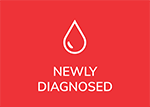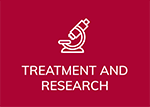I have almost nothing to report, which is the best news.
No clinical or lab evidence of the theoretical potential adverse events, including tumor lysis syndrome, infusion reaction, cytokine release syndrome, and neurotoxicity after my first dose of the monoclonal bispecific T cells engaging antibody (AKA bispecific T cell engager or BITE), epcoritamab.
I am going home tomorrow morning.
Remember that dose was 0.16 mg of epcoritamab or 1/300th of the target dose of 48 mg. Not likely to cause much mischief at such a low level, especially with how they have loaded me up on steroids and Benadryl.
Though I was really dopey and unsteady on the Benadryl, and the dexamethasone (a strong long-acting steroid) was trying to keep me up simultaneously, I didn’t feel that bad in the morning. I felt even better after a short nap.
I told the nurse I was mentally clear (I am screened daily by checking my orientation to date and place, being asked to name common objects, write sentences, follow commands, do a simple math problem, etc.), but I was wrong.
I knew I wasn’t all there when I stepped into the shower, and only when I started to wash my face, I realized that I was still wearing my now soaking-wet N95 mask. What a ridiculous image! It always amazes me how unaware I am of being unaware. I think I would know by now based on my CAR-T experience.
Labs and vitals were all good, but when I traced the lab trends using the CLL SOCIETY’S spreadsheet before starting my trial, it became clear that I needed treatment soon as my red cells and platelets were drifting down while still in the normal range. Glad I am getting ahead because the warning lights are flashing brighter.
A few details. After the epcoritamab and the steroids yesterday, the red cells and platelets didn’t change as was to be expected, the neutrophils shot up as a predicted effect of the dexamethasone, but the surprise was a significant drop in my lymphocytes. The doctor dismissed it as from the steroids, which is certainly possible and would be of no clinical or prognostic significance. Still, that drop has not happened the many times before when I have received albeit different and lower dose steroids, so I am kind of hoping it’s the first nibble of the BITE chomping at my chronic lymphocytic leukemia and not the steroids. Time will tell.
I stay on the steroids for two more days at home and then restart the dance again three days later back in hospital. The trial sponsor, GenMab, just added another step in the ramp-up.
The next dose is 0.8 mg; a week later, the newly added step is 3 mg; then, in the 4th week, I finally get the full 48 mg. I now need to stay on the steroids for another week and may require a 5th hospital admission. It’s not clear yet. In the big picture, not a big deal, but I want to get up to the treatment dose ASAP because my cancer is growing, especially with immunotherapies; the drug-to-target ratios are important. The sooner I start the actual treatment, the resulting disease burden means the better my immune will respond to the challenge, the lower the risk of bad reactions, and the higher the chances of success.
I am off to a good start.
I will soon post on why I chose this therapy over others.
Did I mention that I am the first CLL patient in the US to be treated on this protocol?
Stay strong; we are in this together.
Brian


















2 Responses
Wish you all the best & healthy days ahead!!
Wishing the best outcome possible. You are our CLL Community Champion!